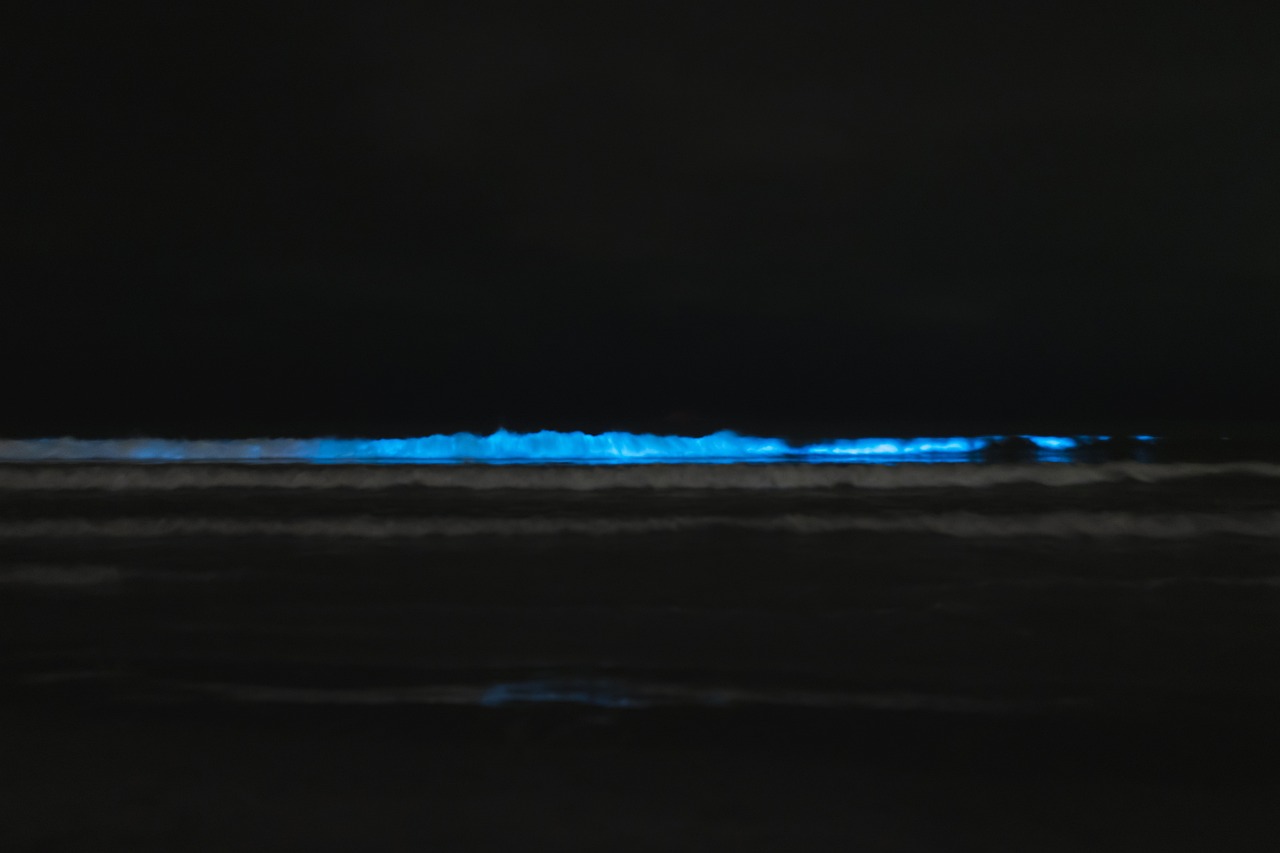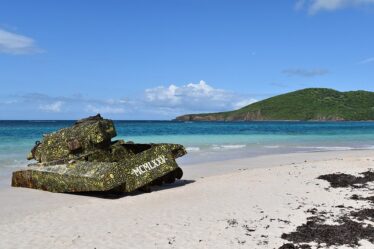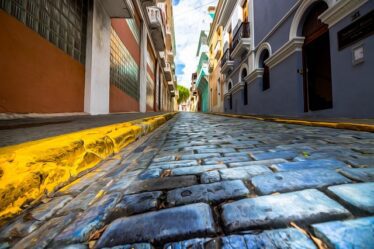
Introduction
Mosquito Bay, located on the island of Vieques in Puerto Rico, is renowned as the brightest bioluminescent bay in the world. This natural marvel attracts visitors from all over the globe, offering an unparalleled opportunity to witness the mesmerizing glow of bioluminescent microorganisms. In this comprehensive guide, we will explore the unique features of Mosquito Bay, delve into the science behind its bioluminescence, highlight the best ways to experience this natural wonder, and provide essential travel tips for visitors.
The Magic of Bioluminescence
What is Bioluminescence?
Bioluminescence is the production and emission of light by living organisms. This phenomenon occurs when certain chemicals within an organism react to produce light. In Mosquito Bay, the bioluminescence is primarily caused by tiny microorganisms called dinoflagellates. When these organisms are disturbed by movement in the water, they emit a blue-green light, creating a stunning visual effect.
The Science Behind Mosquito Bay’s Glow
Mosquito Bay’s extraordinary brightness is attributed to the high concentration of dinoflagellates, specifically Pyrodinium bahamense. These microscopic organisms thrive in the bay due to a combination of factors:
- Nutrient-Rich Waters: The bay’s waters are rich in nutrients that support the growth of dinoflagellates. Mangroves surrounding the bay contribute to this nutrient abundance by shedding leaves that decompose and release organic material into the water.
- Protected Environment: The bay’s shape and shallow depth create a sheltered environment, allowing the dinoflagellates to flourish without being swept away by strong currents.
- Optimal Salinity and Temperature: The specific salinity and temperature conditions in Mosquito Bay are ideal for the proliferation of these bioluminescent organisms.
Experiencing Mosquito Bay
Best Time to Visit
The bioluminescence in Mosquito Bay can be seen year-round, but certain conditions enhance the visibility of the phenomenon. The best time to visit is during a new moon or on nights when the moon is not full, as the darker skies make the bioluminescence more vivid. Additionally, calm nights with minimal wind are ideal, as disturbances in the water can affect the clarity of the glow.
Guided Tours
To fully appreciate the beauty of Mosquito Bay, it is recommended to take a guided tour. Local tour operators offer kayaking and electric boat tours that provide an immersive experience. Knowledgeable guides explain the science behind the bioluminescence and share insights about the bay’s ecosystem. Some popular tour operators include:
- Vieques Adventure Company: Known for their informative and environmentally conscious tours, they offer kayaking experiences that allow visitors to paddle through the glowing waters.
- Abe’s Snorkeling and Bio Bay Tours: This operator provides electric boat tours, offering a more relaxed way to enjoy the bioluminescence while learning about the bay’s history and biology.
Kayaking Adventures
Kayaking is a popular way to experience Mosquito Bay’s bioluminescence. Paddling through the glowing waters creates an enchanting effect as the kayak and paddles disturb the dinoflagellates, causing them to light up. Tours typically include all necessary equipment and instruction, making them accessible even for beginners.
Protecting the Bay
Conservation Efforts
Mosquito Bay’s unique ecosystem requires ongoing conservation efforts to ensure its preservation. Local organizations and tour operators work together to minimize the impact of tourism on the bay. Conservation measures include:
- Limiting Tour Group Sizes: To reduce the environmental impact, tour operators limit the number of participants in each tour.
- Using Non-Motorized Vessels: Kayaks and electric boats are preferred to minimize pollution and disturbances to the water.
- Educating Visitors: Guides educate visitors about the importance of protecting the bay and its fragile ecosystem, encouraging responsible behavior.
How Visitors Can Help
Visitors play a crucial role in the conservation of Mosquito Bay. To help protect this natural wonder, visitors should:
- Follow Guidelines: Adhere to the guidelines provided by tour operators and avoid disturbing the water unnecessarily.
- Avoid Pollutants: Refrain from using sunscreen, insect repellent, or other chemicals that can harm the water quality.
- Respect Wildlife: Avoid touching or disturbing marine life in the bay.
Exploring Vieques Island
Beaches
Vieques is home to some of the most beautiful beaches in the Caribbean. While visiting Mosquito Bay, take time to explore the island’s pristine shores, including:
- Playa Caracas (Red Beach): Known for its soft white sand and crystal-clear waters, this beach is perfect for swimming and sunbathing.
- Playa La Chiva (Blue Beach): A favorite for snorkeling, this beach features vibrant marine life and stunning underwater landscapes.
- Playa Negra (Black Sand Beach): Unique for its black sand, this beach offers a striking contrast to the typical white sand beaches of the Caribbean.
Historical Sites
Vieques has a rich history that is reflected in its historical sites. Notable places to visit include:
- Fortín Conde de Mirasol: A historic fort that offers panoramic views of the island and houses a museum with exhibits on Vieques’ history.
- Isabel Segunda: The main town on the island, where visitors can explore colonial architecture and local shops.
Outdoor Activities
Beyond the bioluminescent bay, Vieques offers a variety of outdoor activities for nature enthusiasts:
- Hiking: Explore the island’s trails, such as those in the Vieques National Wildlife Refuge, which offer opportunities to see native flora and fauna.
- Snorkeling and Diving: The island’s clear waters and coral reefs make it an excellent destination for snorkeling and diving.
- Horseback Riding: Several operators offer horseback riding tours, allowing visitors to explore the island’s landscapes in a unique way.
Practical Information for Visitors
Getting to Vieques
Vieques is accessible by ferry or small plane from mainland Puerto Rico. Ferries depart from Ceiba, while flights are available from San Juan and other regional airports. It is advisable to book transportation in advance, especially during peak travel seasons.
Accommodation
Vieques offers a range of accommodation options to suit different preferences and budgets, from luxury resorts to charming guesthouses. Popular options include:
- W Retreat & Spa: A luxury resort offering beachfront accommodations and upscale amenities.
- Hix Island House: An eco-friendly hotel that blends modern design with sustainable practices.
- Casa de Amistad: A charming guesthouse known for its warm hospitality and comfortable rooms.
Dining
The island’s dining scene features a mix of local and international cuisine. Don’t miss the opportunity to try Puerto Rican specialties such as mofongo, as well as fresh seafood. Notable restaurants include:
- El Quenepo: Known for its creative dishes and elegant ambiance.
- Bili: A popular spot for enjoying Puerto Rican cuisine with a contemporary twist.
- Duffy’s: A laid-back beachfront restaurant offering delicious seafood and tropical cocktails.
Conclusion
Mosquito Bay in Vieques, Puerto Rico, is a captivating destination that offers a truly unique experience. From its stunning bioluminescence to the island’s natural beauty and cultural richness, there is something for every visitor to enjoy. Whether you’re paddling through the glowing waters, exploring the island’s pristine beaches, or delving into its rich history, a trip to Mosquito Bay promises unforgettable memories. By respecting the environment and supporting conservation efforts, visitors can help ensure that this natural wonder remains a magical destination for generations to come.


